Top Rankings
Douglas School District 51-1 ranks among the top 20% of public school district in South Dakota for:
Category
Attribute
Diversity
Most diverse schools (Top 1%)
Community Size
Largest student body (number of students) (Top 1%)
For the 2025 school year, there is 1 public middle school serving 623 students in Douglas School District 51-1. This district's average middle testing ranking is 4/10, which is in the bottom 50% of public middle schools in South Dakota.
Public Middle School in Douglas School District 51-1 have an average math proficiency score of 32% (versus the South Dakota public middle school average of 39%), and reading proficiency score of 48% (versus the 49% statewide average).
Minority enrollment is 39% of the student body (majority Hispanic), which is less than the South Dakota public middle school average of 42% (majority American Indian).
Overview
This School District
This State (SD)
# Schools
5 Schools
297 Schools
# Students
2,753 Students
40,141 Students
# Teachers
177 Teachers
2,999 Teachers
Student : Teacher Ratio
16:1
16:1
District Rank
Douglas School District 51-1, which is ranked within the bottom 50% of all 146 school districts in South Dakota (based off of combined math and reading proficiency testing data) for the 2021-2022 school year.
The school district's graduation rate of 80-84% has decreased from 90-94% over five school years.
Overall District Rank
#94 out of 148 school districts
(Bottom 50%)
(Bottom 50%)
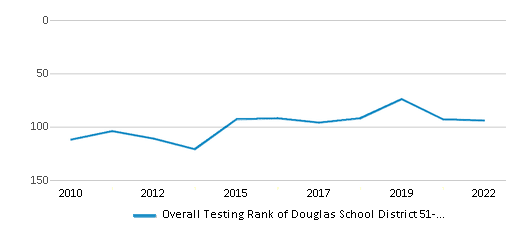
Math Test Scores (% Proficient)
39%
42%

Reading/Language Arts Test Scores (% Proficient)
51%
51%
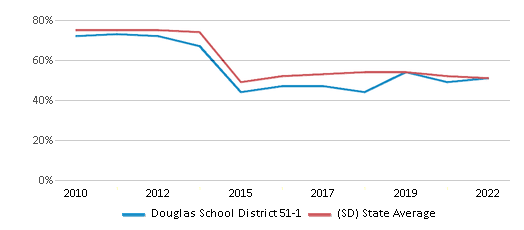
Science Test Scores (% Proficient)
41%
42%

Graduation Rate
80-84%
82%
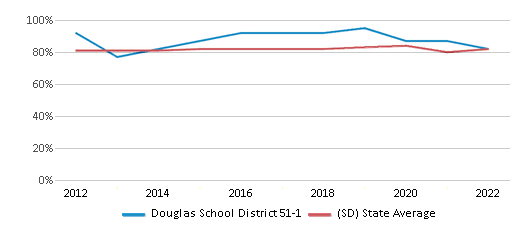
Students by Ethnicity:
Diversity Score
0.53
0.59
# American Indian Students
217 Students
10,455 Students
% American Indian Students
8%
26%
# Asian Students
21 Students
519 Students
% Asian Students
1%
1%
# Hispanic Students
302 Students
2,703 Students
% Hispanic Students
11%
7%
# Black Students
47 Students
1,024 Students
% Black Students
2%
3%
# White Students
1,823 Students
23,358 Students
% White Students
66%
58%
# Hawaiian Students
12 Students
46 Students
% Hawaiian Students
n/a
n/a
# Two or more races Students
331 Students
2,036 Students
% of Two or more races Students
12%
5%
Students by Grade:
# Students in PK Grade:
-
174
# Students in K Grade:
238
896
# Students in 1st Grade:
224
903
# Students in 2nd Grade:
236
918
# Students in 3rd Grade:
238
750
# Students in 4th Grade:
205
793
# Students in 5th Grade:
237
1,598
# Students in 6th Grade:
208
9,664
# Students in 7th Grade:
206
11,058
# Students in 8th Grade:
209
11,237
# Students in 9th Grade:
253
674
# Students in 10th Grade:
185
578
# Students in 11th Grade:
174
481
# Students in 12th Grade:
140
417
# Ungraded Students:
-
-
District Revenue and Spending
The revenue/student of $12,308 in this school district is less than the state median of $13,121. The school district revenue/student has stayed relatively flat over four school years.
The school district's spending/student of $10,736 is less than the state median of $12,623. The school district spending/student has stayed relatively flat over four school years.
Total Revenue
$34 MM
$1,916 MM
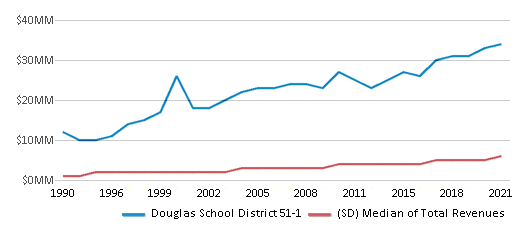
Spending
$30 MM
$1,844 MM
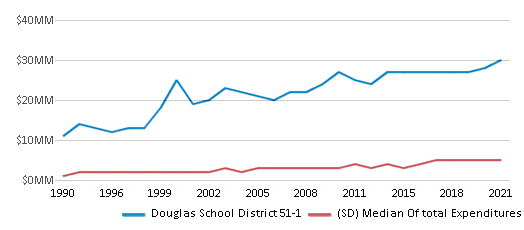
Revenue / Student
$12,308
$13,121
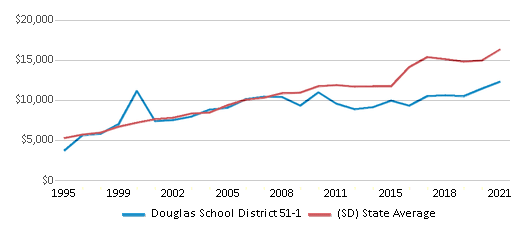
Spending / Student
$10,736
$12,623
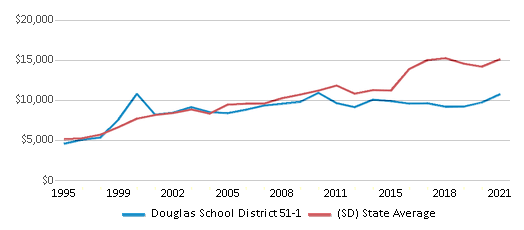
Best Douglas School District 51-1 Public Middle Schools (2025)
School
(Math and Reading Proficiency)
(Math and Reading Proficiency)
Location
Grades
Students
Rank: #11.
Douglas Middle School - 01
(Math: 32% | Reading: 48%)
Rank:
Rank:
3/
Bottom 50%10
691 Tower Rd
Box Elder, SD 57719
(605) 923-0050
Box Elder, SD 57719
(605) 923-0050
Grades: 6-8
| 623 students
Recent Articles

Year-Round Or Traditional Schedule?
Which is more appropriate for your child? A year-round attendance schedule or traditional schedule? We look at the pros and cons.

Why You Should Encourage Your Child to Join a Sports Team
Participating in team sports has a great many benefits for children, there is no doubt. In this article you will learn what those benefits are.

White Students are Now the Minority in U.S. Public Schools
Increasing birth rates among immigrant families from Asia and Central and South America, combined with lower birth rates among white families, means that for the first time in history, public school students in the United States are majority-minority. This shift in demographics poses difficulties for schools as they work to accommodate children of varying language abilities and socio-economic backgrounds.





